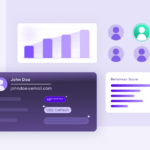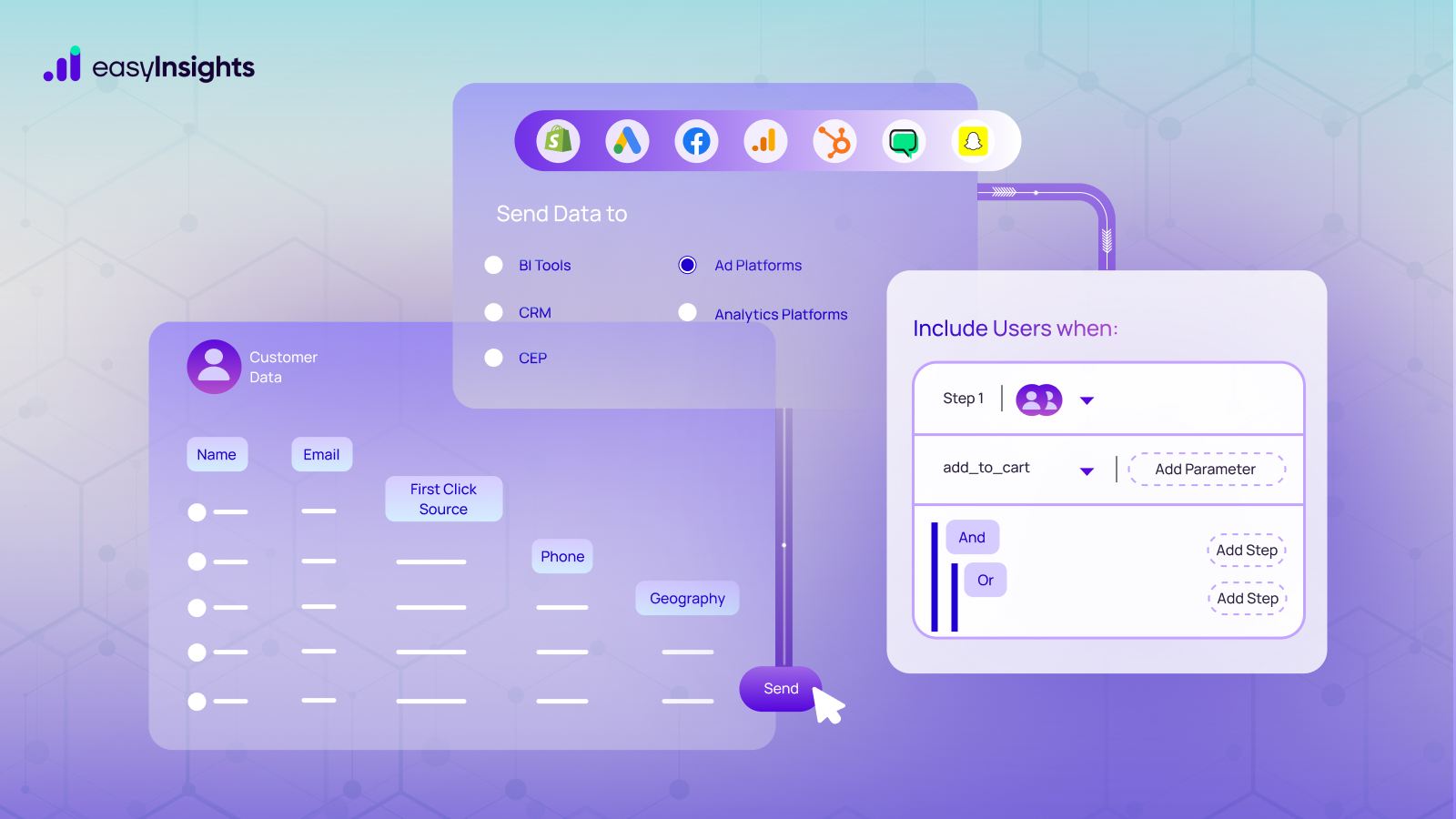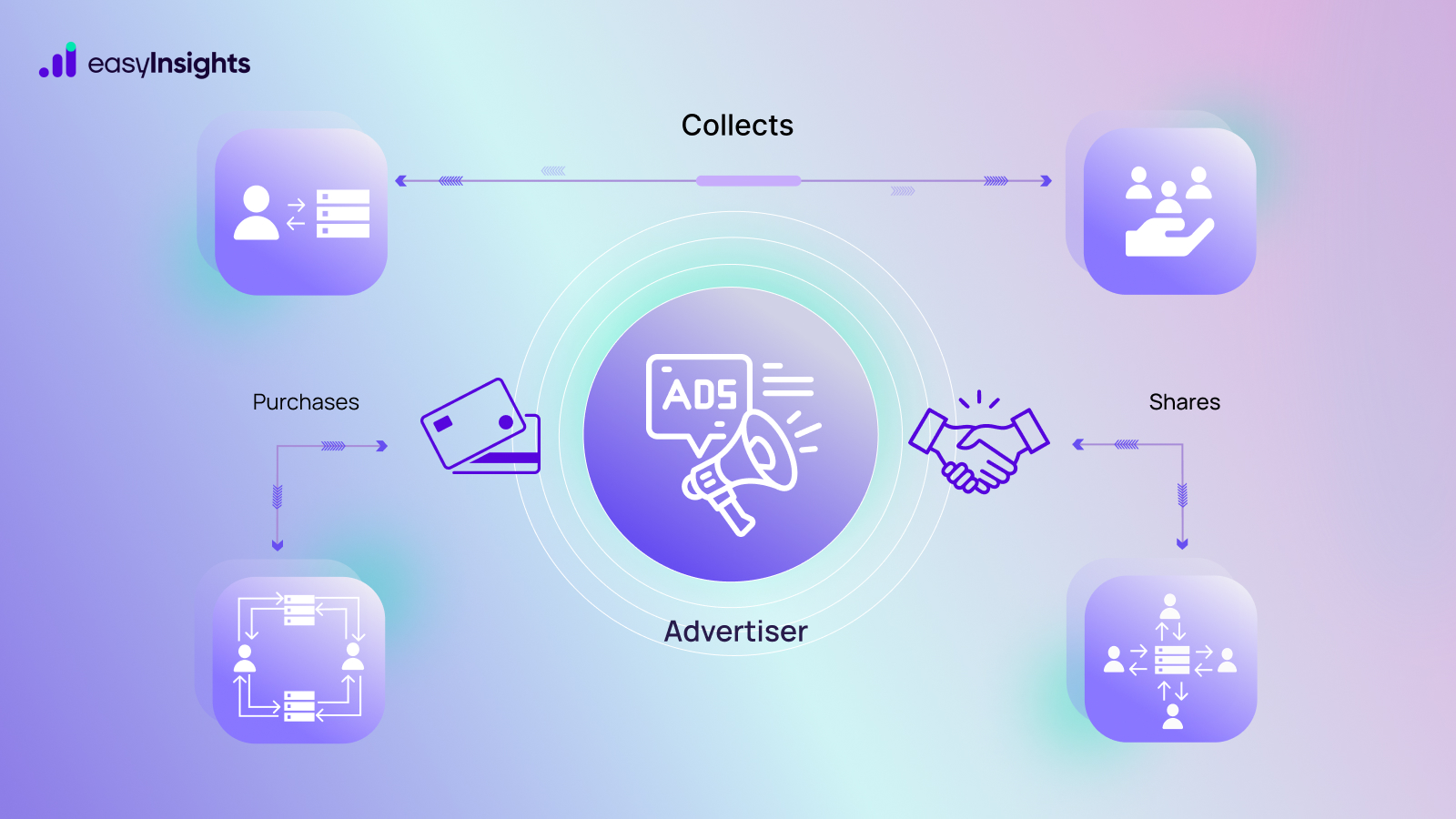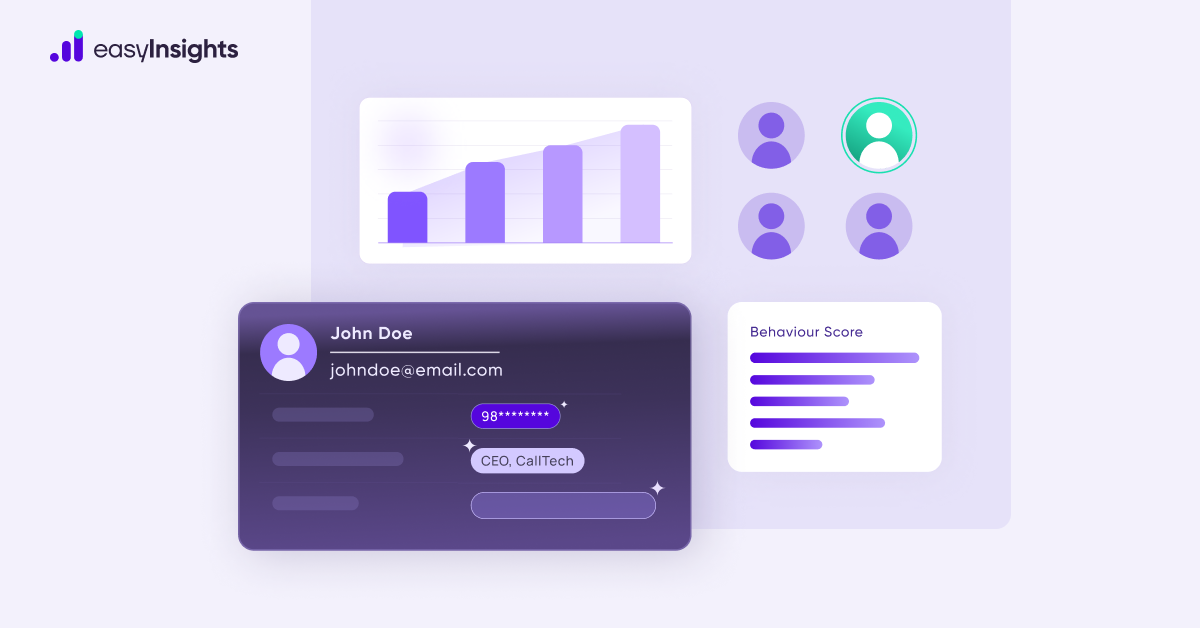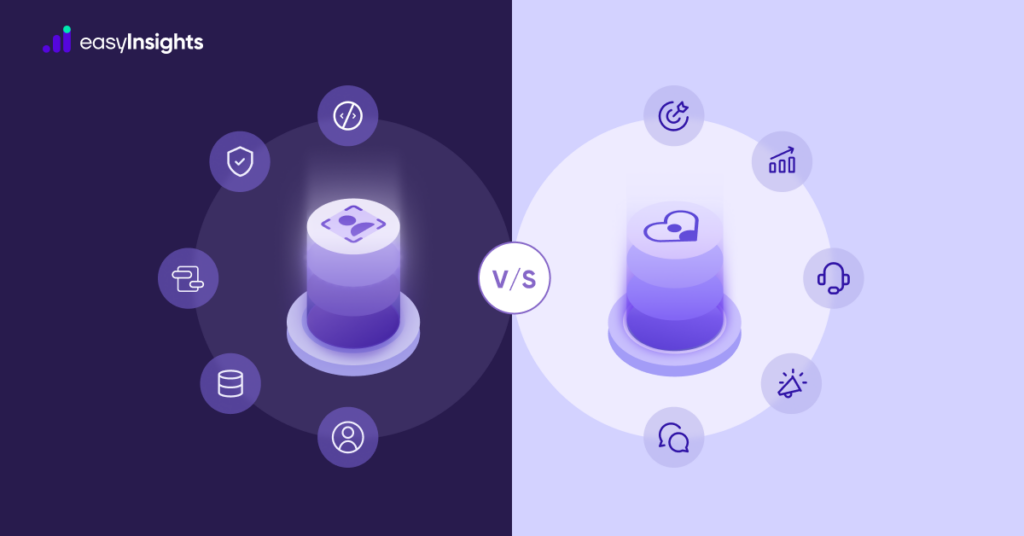
A survey conducted by Gartner revealed that only 14% of businesses have achieved a functional customer-360, while a massive 82% still aim to achieve it. The small percentage of brands who attained this goal relied on a Customer Data Platform (CDP) instead of their Customer Relationship Management (CRMs) systems.
If you also aspire to create unified customer profiles to optimize marketing and power growth, you’ll need to decide whether to use CRMs or to explore the budding market of CDPs. As a leader and decision-maker, it’s essential for you to know the difference between the two systems.
This article unveils the differences between a CRM and a CDP and helps you identify a better solution for your usage. Read on.
Jump ahead to:
CRMs vs CDPs: The Basics
Before moving on to the differences, let’s first understand what exactly these tools are.
What are CRMs ?
A Customer Relationship Management (CRM) system helps manage a brand’s interactions with existing and potential customers. The tool collects data about customers’ interactions and contact details from sources such as the company’s website, phone calls, email, live chat, and social media.
This enables sales, marketing, and support teams to access customer data in one centralized place. At the same time, a CRM lets you analyze customer activities, preferences, and feedback that you can use to build and nurture customer relationships.
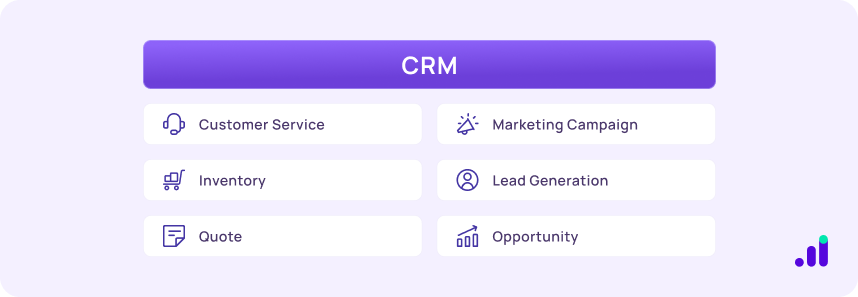
What are CDPs ?
A Customer Data Platform (CDP) collects and organizes customer data across multiple touchpoints and unifies it into a comprehensive customer profile. These profiles are accessible by other tools in your tech stack, including a CRM, allowing you to optimize marketing campaigns, customer service, and other customer experience initiatives.
Unlike other data management tools that might focus on a specific aspect of customer data, a CDP is designed to provide a holistic view of the customer by integrating data from various sources, including web activity, mobile apps, email interactions, and physical store visits.
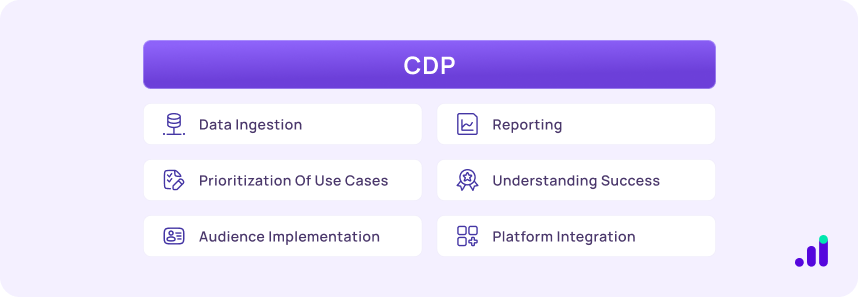
Additional Read: Customer Data Platforms (CDPs) – A Comprehensive Guide
CRMs vs CDPs : Handling Customer Data
Since customer data is at the core of both CDP and CRM systems, understanding how they handle it will help clarify the differences.
- Data Collection
CRM systems collect data through direct customer interactions, such as customer support calls, emails, sales transactions, sales notes from a demo, etc. Due to the data’s unstructured and ununiform nature, employees often need to feed data into CRM manually.
CDPs, on the other hand, are designed to collect disparate data types from innumerable sources, be they online or offline. These solutions rely on API integrations and SDKs to automate user data collection from websites, apps, point-of-sale devices, and server-side sources.
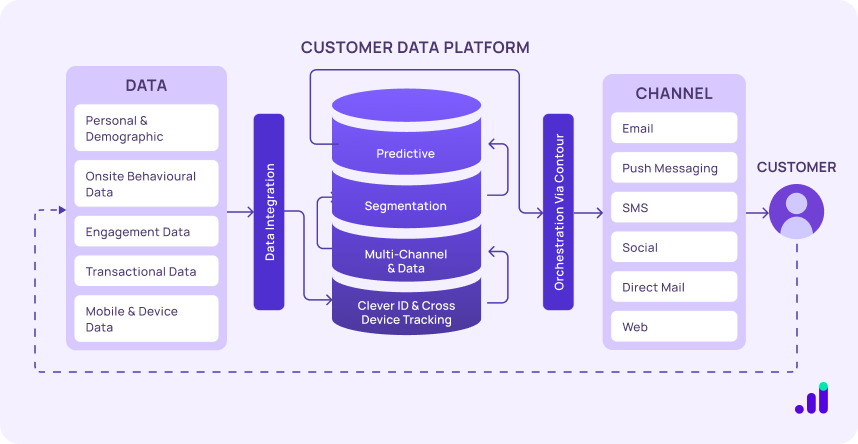
- Data Management
Another key difference between the two systems is how they store data and what you can do with it. A CRM collects data in a separate storage, often a cloud data warehouse, managed by the vendor. You can use the collected data to segment customers based on their previous interactions with your brand, manage leads, and track sales pipelines.
Traditionally, CDPs stored data in a warehouse outside a brand’s data infrastructure. However, composable CDPs, like EasyInsights, let you store collected data right in your own data warehouse, where you can clean and transform it.
Moreover, features like identity resolution and data enrichment allow you to deduplicate records, fill gaps in your data, and consolidate it to create a customer 360. This coherent and centralized repository of data provides a better understanding of the multi-channel customer journeys.
Additional Read: The Relevance of Composable CDPs – Marketer’s POV
- Data Activation
The next difference between CRMs and CDPs lies in how you can use customer data present in the system. As mentioned above, CRM contains data that can’t be standardized and is stored in your vendor’s infrastructure. This makes sending your CRM data to other tools in your tech stack difficult.
As a result, customer data remains within the bounds of your CRM. Its access is limited to sales, support, and marketing teams, who use it to inform their customer-facing decisions, such as providing support and closing deals.
Unlike CRMs, CDPs let you sync all customer data, including customer-360 profiles and segments, to any destination platform in your infrastructure. You can send data to email automation software, analytics tools, an advertising platform, etc. Since customer profiles are readily available to all stakeholders in the organization, they can be used for various purposes, including creating tailored marketing campaigns, personalizing content, and implementing effective sales strategies.
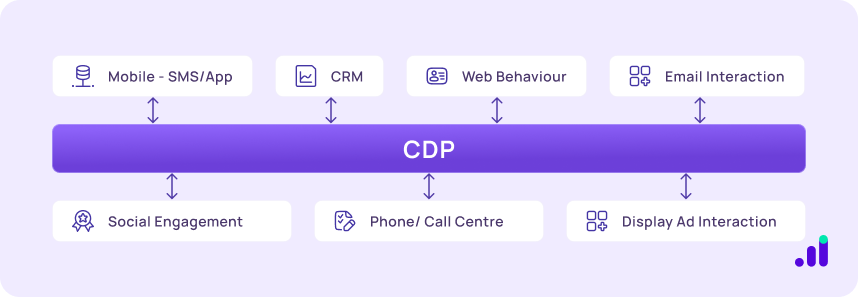
- Data Governance
CDPs and CRMs also differ in how they tackle a brand’s data governance. CRMs as a business application category have been around for decades now. That means most renowned CRMs are from a pre-privacy era and often lack proper data governance features.
Even those with data governance or privacy-focused features are just an afterthought and a move in response to regulations like GDPR and CCPA. So, you as a business have a bigger role to play, be it defining policies or integrating security mechanisms.
However, CDPs represent a newer generation of data platforms. They come with tools that let you implement data governance mechanisms out of the box, including consent management, role-based access role, data retention policies, and more.
On top of that, a composable CDP even grants you more control over data by storing everything in your data warehouse. This allows you to decide exactly what data to store, to what extent, and where to sync it.
Which One Is a Better Solution for You?
The final decision isn’t about choosing between these two solutions. Instead, it’s about finding an effective way to use CDP and CRM together. You can continue using your CRM system to manage customer relationships, track leads, and inform sales decisions.
However, CRM can no longer be your ultimate source of truth when it comes to customers because it simply isn’t. That’s where you’ll need a CDP, which can sit on top of your data warehouse, collect all kinds of customer data, create customer-360, and push it downstream to your apps, including CRM.
If you want a CDP that delivers all these benefits, turn to EasyInsights. It lets you collect user behavior and event data. You can also unify data from ad platforms, CRMs, analytics tools, and more to get a complete view of your customers.
Book a demo today to see EasyInsights in action!
Additional Read: The Ultimate Guide to Successfully Integrate Your CRM With Google Analytics



